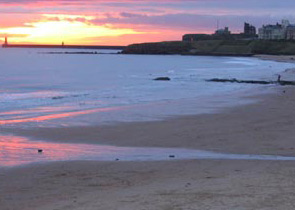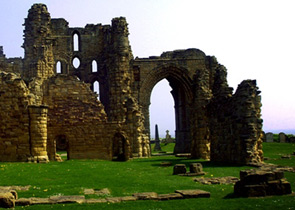|
History of
Tynemouth
Tynemouth is an area
of extreme natural beauty and history.
The area that was to become Tynemouth was
probably first inhabited during the later
part of the iron age as its position on
the headland would serve as an excellent
defensive position. For many centuries it
followed this tradition with several
nations building forts and later castles
on the site. Whilst being a site of
military importance the area is moreover
associated with a long history of
religion with the first monastery being
built in the 7th Century. The site was
used for this purpose until the
reformation when Henry VIII took control
of the estate and reverted it to a
coastal defence. The site was used in
this way against Napoleon and in both
World
Wars.
|

|
 |
The town
blossomed during the industrial revolution when
the loop railway system (now the Metro system)
was developed. Many inner city workers from
Newcastle flocked to the coast for a weekends
relief enjoying the sun, beach and an
incredible and awe inspiring coastline. Today
the area is an upmarket residential area with a
quintessential English ambience. The town is
dually centred around firstly; its elegant,
bustling market front street running from the
Metro station easterly towards the historic
Priory. |
| Secondly, the Jewel
in Tynemouth’s Crown, the longsands beach. The
sands are representative of a stunningly
beautiful rural beach, set midst an urban
location. The beach is very popular with
surfers and the longsands has hosted the O’Neil
British national surfing championships. The
waters provide an excellent proving ground for
the amateur and professional alike and surfers
can be seen practicing their skills on most
days. The sands are extremely well maintained
and have been awarded the prestigious blue flag
award, awarded only to those beaches that are
truly exceptional. It is here where Crusoe’s is
located. |
 |
|
|